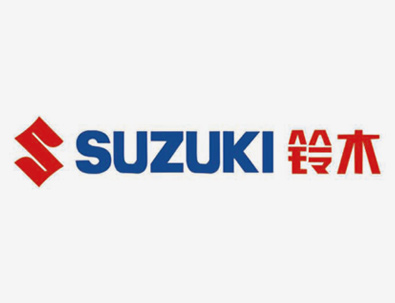

1. Check the automatic watering system. These systems a […]
1. Check the automatic watering system.
These systems are easily blocked during use. They are also often located in elevators and are not often removed, so they can get clogged. This is usually not checked, no blockages are found, and the battery is burned out and dried. The cost of replacing the battery is $ 400- $ 600, which is a common problem that can be avoided.
2. Clean the top of the battery to prevent acid and corrosion.
Dirty batteries can cause many problems. If you put the voltmeter on top, the battery is actually discharging slowly. If you charge the battery, it will slowly discharge over time. Corrosion can accumulate and damage the cable, which can lead to battery performance degradation. If you have a lot of batteries, the price of the cable may be expensive, $ 70 to $ 100 each, and it will also reduce the performance of the battery. Just take a moment to clean the top of the battery to avoid this situation.
3. Place on top of a battery with poor performance.
Many companies do not take care of problematic batteries. Poorly performing batteries place a heavy burden on the electrical components of the forklift, which can be very expensive for thousands of dollars. When the battery is low and it is still being used, damage will occur.
You can determine whether the battery has not been running for a full time. Many batteries can only be used for 1 or 2 hours, and the driver does not know which battery is good or bad. They put them in and the batteries ran out quickly.
Facilities with low battery power may cost thousands of dollars a month to replace electrical components in forklifts, and the root cause is low battery power. You can identify these batteries, give full play to their performance, and can save this cost.
When the elevator goes down, your productivity will decrease, product transportation will decrease, battery replacement will increase, and the unnecessary cost of replacing parts and the labor cost of doing so.
4. Use filtered water in the battery.
In so many facilities, I can tell you without hesitation that using tap water in the battery will cause you trouble and unnecessary cost. I have always been like this. The battery using tap water is worse than all other batteries. They heat up more. Minerals in the water accumulate on the board and generate heat. Heat can cause premature battery failure. My estimate is that you have shortened the battery life by 50%. Even if the battery has warranty coverage, it must be sent out and wait for its return, and bear the cost. This situation can be avoided by using filtered water.
5. Use deionized water.
An inexpensive and effective solution that can solve the problem of using filtered water. You can connect it to the water pipeline, it is very cheap, and you can get the benefits of filtered water. Easy to use. You don't have to mess up a bottle of filtered water. You can use an automatic water gun to fill the battery instead of minutes, but in a few seconds, so pouring filtered water from the bottle is likely to be the main reason, which may be the main obstacle to using filtered water. This makes filling easy and easy, and eliminates the minerals that contaminate the battery, which will cause your expenditure and productivity to decrease.
6. Prohibit the opportunity to charge.
It is forbidden to charge during the 15-minute break and lunch. Reduce the battery charge by 80% and then fully charge it. If you have the opportunity to charge, you can greatly reduce battery life.
I think the reason this process starts is that when your battery is low, the driver knows this and they will try to charge more during the break.
Opportunistic charging will accelerate the decline in battery performance. If you find a battery with poor performance, you can avoid this problem.
This can reduce battery life for a year or two, in addition, you also have to bear the electric charges required for unnecessary charging, as well as labor costs and productivity of charging.
7. The number of balanced batteries per month shall not exceed one.
Equalization can generate huge amounts of heat, especially when the battery is a little old. Heat will kill the battery. It got rid of the lead. Equalization can temporarily increase power, but battery consumption is faster. I walked into the facility and literally saw the battery coming out of the heat.
The cost of the temporary upgrade is short battery life and high replacement and maintenance costs.
8. The battery should cool down after charging.
Remember, heat will kill the battery. If you use them immediately after charging them, they will become much hotter. Companies that make full use of batteries will cool down a few hours after charging.
9. Quickly check cables and connections every month.
This is easily overlooked. Everything looks clear at a glance, but careful inspection will reveal corrosion that prevents current from passing. Shake the cable and make sure the connection is secure.
Bad cables can affect battery performance. If valid electricity is not passed, your battery cannot be fully discharged or charged. You might think that your battery is broken, but because the cable is broken, you cannot actually fully charge it. Therefore, please check if they are corroded.
10. Delay 30 minutes to program the charger.
A company I serve cannot stop their workers from charging when they are not paying attention during breaks and lunch. Therefore, they installed a 30-minute delay on the charger.
The staff can plug in the power supply normally, but they cannot be charged due to the delay.
The disadvantages and costs of opportunity charging are so great that installation delays are a very sensible choice for the facility. Most rest periods are 15 or 30 minutes, during which no charging is required.
The battery life will be longer. The typical warranty period is 5 years, but you can get 7 or 8 years of productive lift from the battery. If you do not perform the above operations, the battery may only work for one or two years, and then it cannot be used normally, and in the past few years, all accompanying unnecessary time, labor and costs are in use. You will bear the consequences of increased charging, decreased productivity, and unnecessary electricity and labor costs to maintain its service life.
Labor costs for poor battery performance are high. A bad battery means you need people to replace the battery. There are security risks. There is a risk of injury when replacing the battery. As there is more activity around the battery area, the chance of injury will also increase.




















